Marigolds are known for their vibrant, daisy-like flowers – often in cheerful yellow, gold or orange, but can also be red or even cream. They normally stand anywhere between 15 to 90cm tall, and the plants themselves have feathery, dark-green foliage, which is also known to be aromatic.
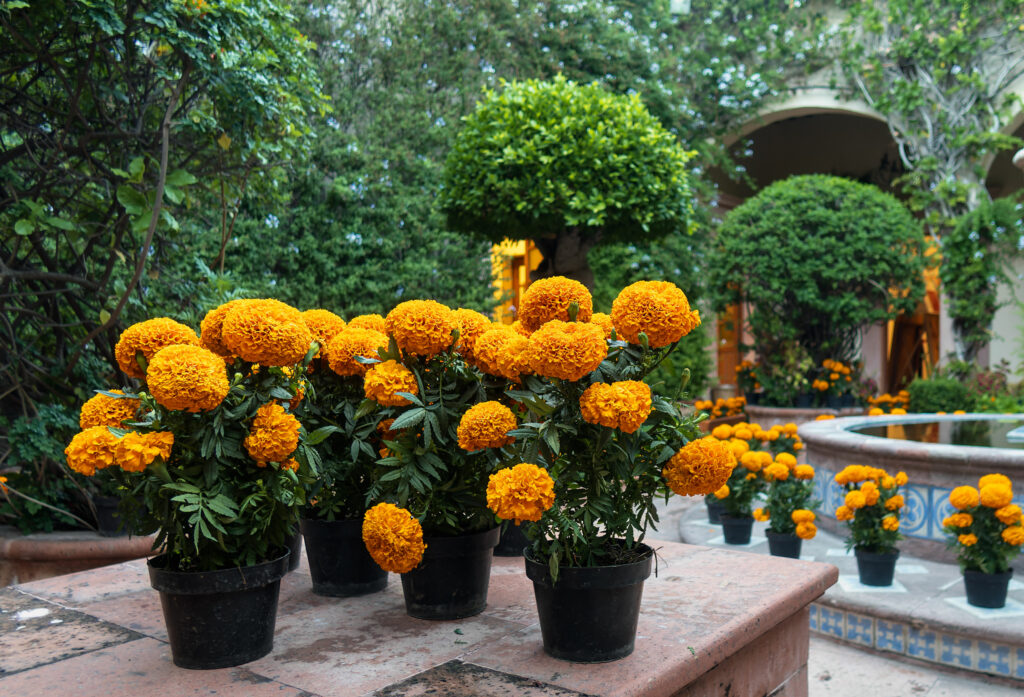
Marigolds are native to the Americas, originating in places like Mexico and spreading down into Latin America. Many years ago the blooms were revered as being a gift from the ‘sun god’ and even today, marigolds play a big part in Mexico’s Dia de los Muertos (or Day of the Dead) festival.
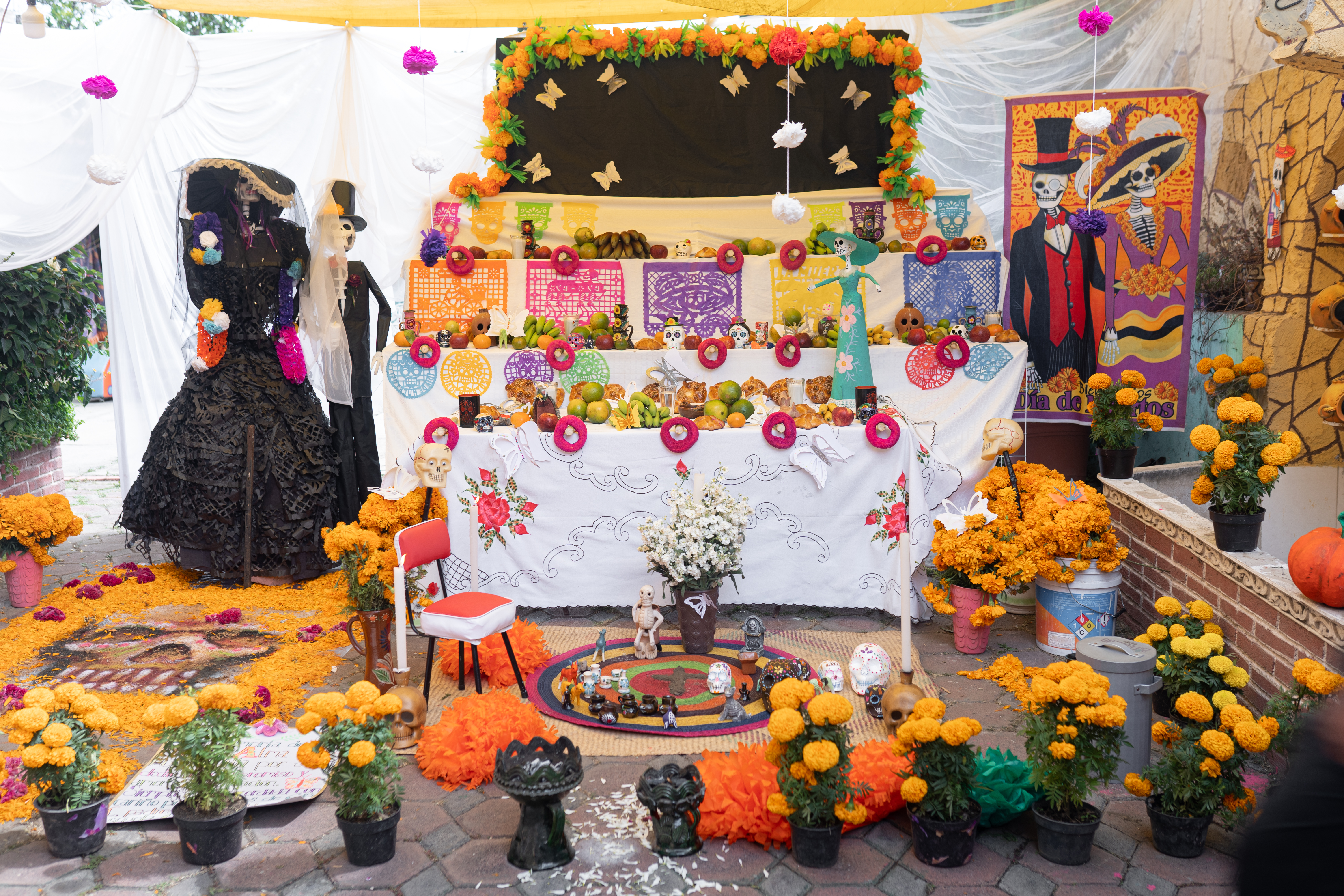
They were introduced into Europe and Africa from around the early 16th Century and soon became popular as a reliable garden flower.
Why grow marigolds?
Marigolds are very popular in English gardens, as they’re easy to grow and bring a cheerful burst of colour to pots, beds and baskets throughout the summer months.
Besides looking great, Marigolds are also sometimes grown for many other benefits. Some varieties are known to be highly aromatic and the strong fragrance is said to act as a deterrent to insects and animals that may pose a threat to nearby vegetation.
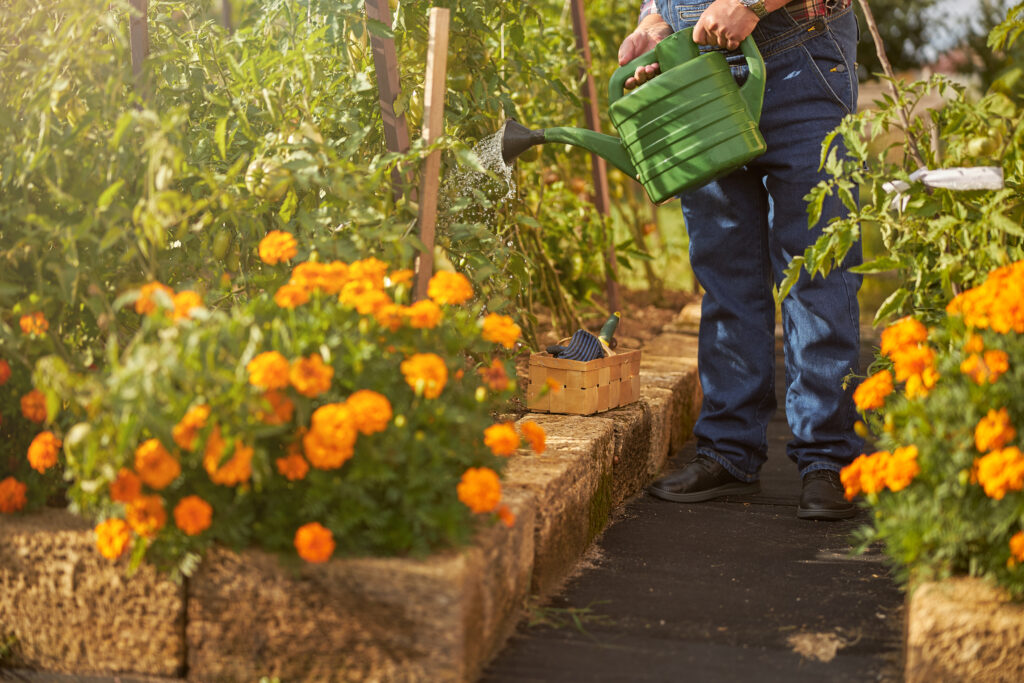
They can also attract beneficial insects like ladybirds and hoverflies, which in turn can help control populations of harmful pests.
They’re also good for pollinators like bees and butterflies, who can’t resist their nectar-rich flowers.
Because of all this, some people grow Marigolds as companion plants – providing a natural solution to support a thriving vegetable garden.
How to grow marigolds
It’s easy to grow marigolds from seed and if you’re very keen, you can get started as early as March onwards – but you will need to keep the young plants under cover, away from frosts.
For indoor sowing, simply sow your seeds in pots or trays with some fine seeding compost and keep the soil moist and covered until they germinate. Once you see shoots, make sure the young plants get plenty of light. You could grow the seedlings on a sunny window sill or in a greenhouse if you have one. Once the young plants have a few sets of leaves you can plant them outside as long as the chance of frosts has passed – usually around April or May.
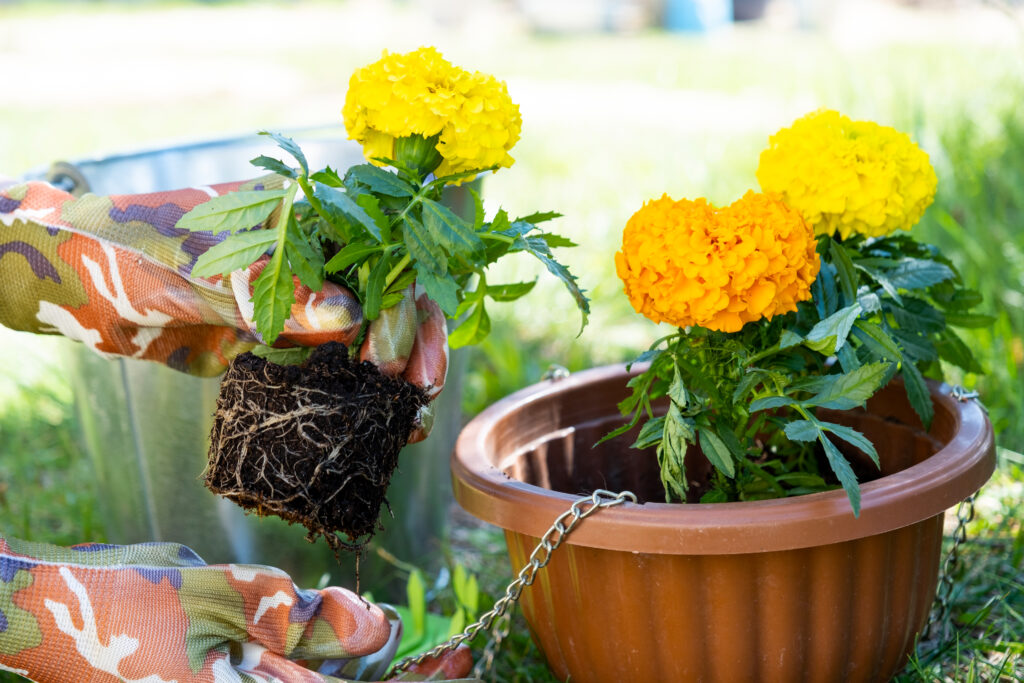
You can also sow seeds directly in the ground where you want them to grow. Just choose a sunny spot with some well-drained soil and plant the seeds at least 3 or 4 cm apart.
Alternatively, you can just wait until May, when you should start to see Marigold plug plants widely available in garden centres and even some supermarkets.
Which types of marigolds should i grow?
With over 50 species of marigold to try, you might be wondering which ones to start with. Here are 3 easy favourites to get you started…
- French Marigolds (Tagetes patula): These compact and bushy plants are well-suited for bedding and container displays, offering a wide range of colours and often a pleasant fragrance.
- African Marigolds (Tagetes erecta): With larger flower heads and a variety of colours, these marigolds are ideal for adding vibrant colour to borders and cutting for displays.
- Signet Marigolds (Tagetes tenuifolia): These smaller, delicate marigolds are perfect for edging, containers, and window boxes, offering an abundance of small, single flowers.
Buy marigold seeds and plants from Suttons (Winners of ‘Which? Best Buy Award’)
Whichever marigolds you go for, tell us all about it in the comments. Happy gardening!
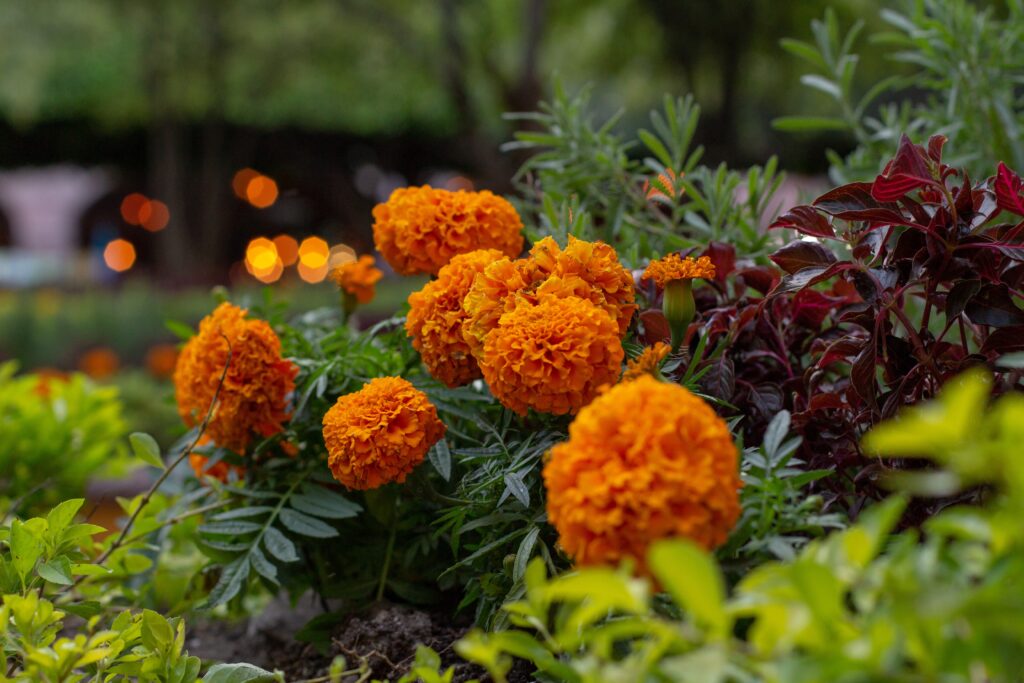
3 interesting facts about marigolds
- Marigolds are also edible plants, and their flowers contain essential oils and a high concentration of flavonoids, making them a proven medicinal plant.
- African marigolds (Tagetes erecta) are native to Mexico and Guatemala. Despite their name, they are indigenous to the Americas, particularly Mexico, and were brought to Europe and other parts of the world in the 16th century
- In some folklore and traditions, marigolds are considered symbols of good luck and fortune.
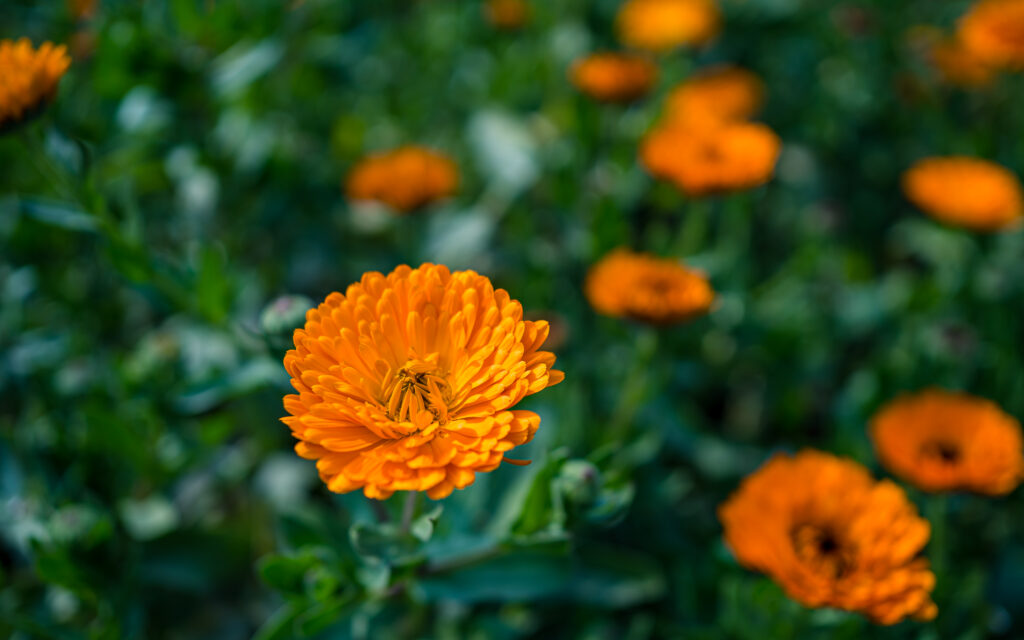
Frequently asked questions about marigolds
Can marigolds be used in hanging baskets?
Yes, marigolds can indeed be used in hanging baskets. Their compact and bushy nature, especially the French marigold varieties, makes them well-suited for container planting, including hanging baskets. The vibrant colours of marigold flowers can add a cheerful and eye-catching display to hanging baskets, making them a popular choice for adding a splash of colour to balconies, porches, or outdoor living spaces.
Can marigolds be grown in containers
Yes, marigolds can be successfully grown in containers. Their compact and bushy nature makes them well-suited for container planting, and they can thrive in various pot sizes. Whether on a patio, balcony, or window sill, marigolds can add vibrant colours and natural pest-repelling properties to container gardens, making them a versatile and popular choice for container planting.
When is the best time to plant marigolds
The best time to plant marigolds is after the last frost date in your area. In most regions, this typically falls in the spring. Marigold seeds can be sown directly into the soil after the danger of frost has passed, or they can be started indoors 4-6 weeks before the last expected frost. This allows the seedlings to be ready for transplanting into the garden once the weather warms up.
Can I really eat marigolds?
Marigolds are generally known to be edible plants. Their flowers contain essential oils and a high concentration of flavonoids, making them suitable for culinary use. Marigold petals can be added to salads, used as a garnish, or infused into teas. However, it’s important to ensure that the marigolds you consume are specifically grown for culinary purposes and have not been treated with any harmful chemicals. Always exercise caution and verify the suitability of the marigolds for consumption before incorporating them into your diet.
How long do marigolds last for?
Marigolds are annual plants, meaning they complete their life cycle within a year. In most cases, marigolds will bloom from early summer until the first frost in the fall. However, if the weather remains mild, they may continue to bloom for a longer period. It’s important to note that while individual marigold plants are annuals, they often self-seed, allowing new plants to grow in the following year. With proper care and favourable conditions, marigolds can provide vibrant blooms for several months during the growing season.
Got any questions about marigolds? Why not ask in the comments and we’ll start the conversation!
